

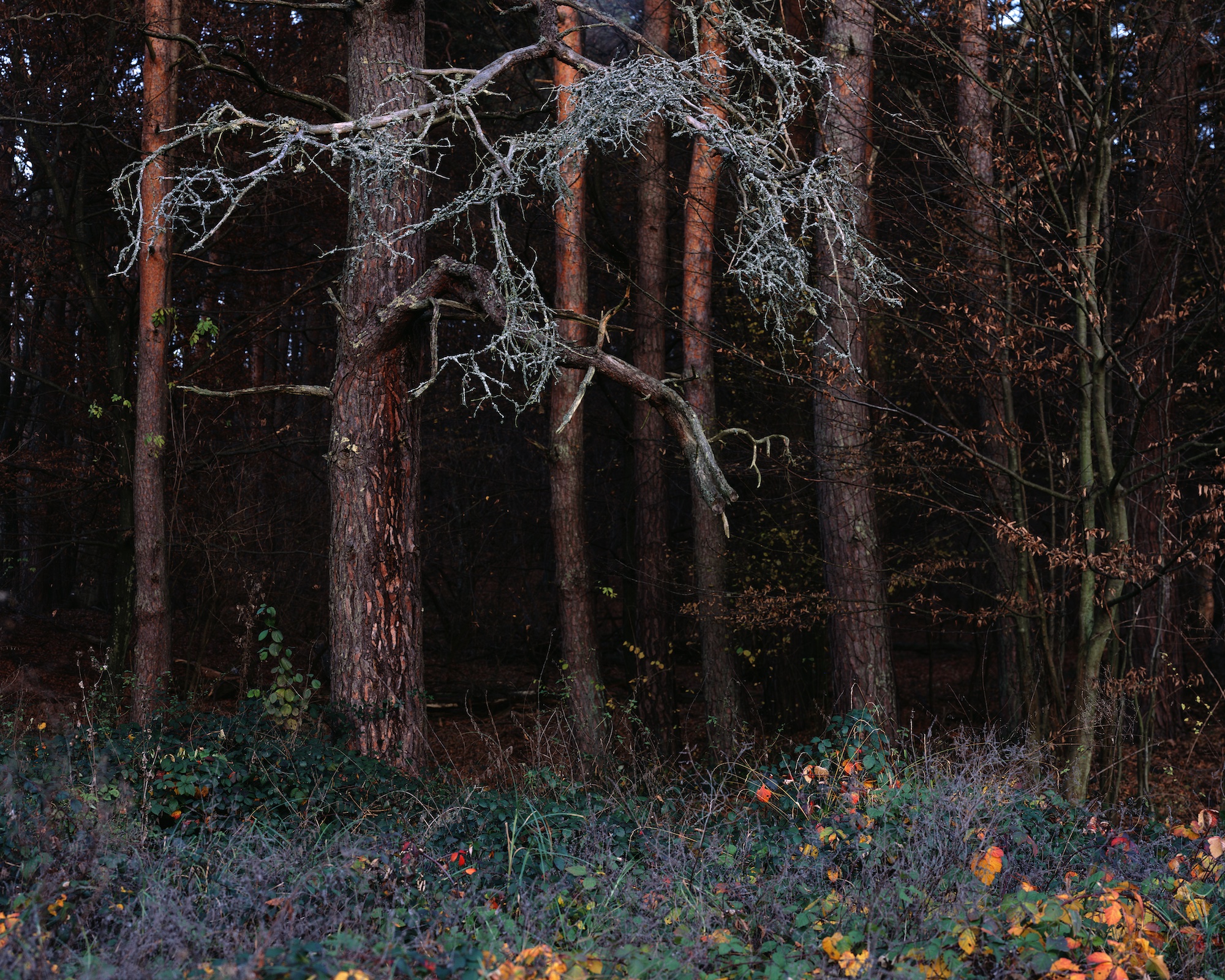



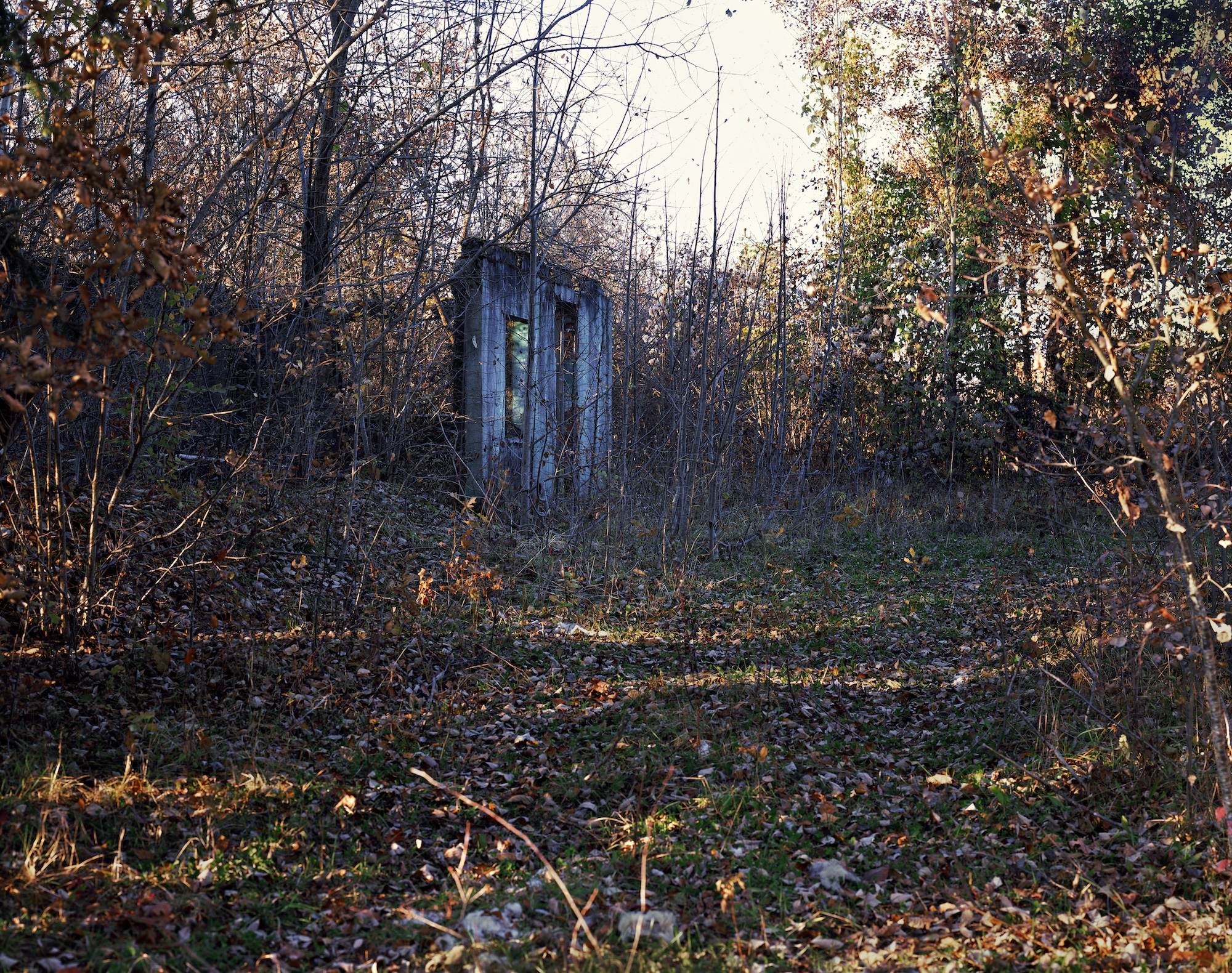
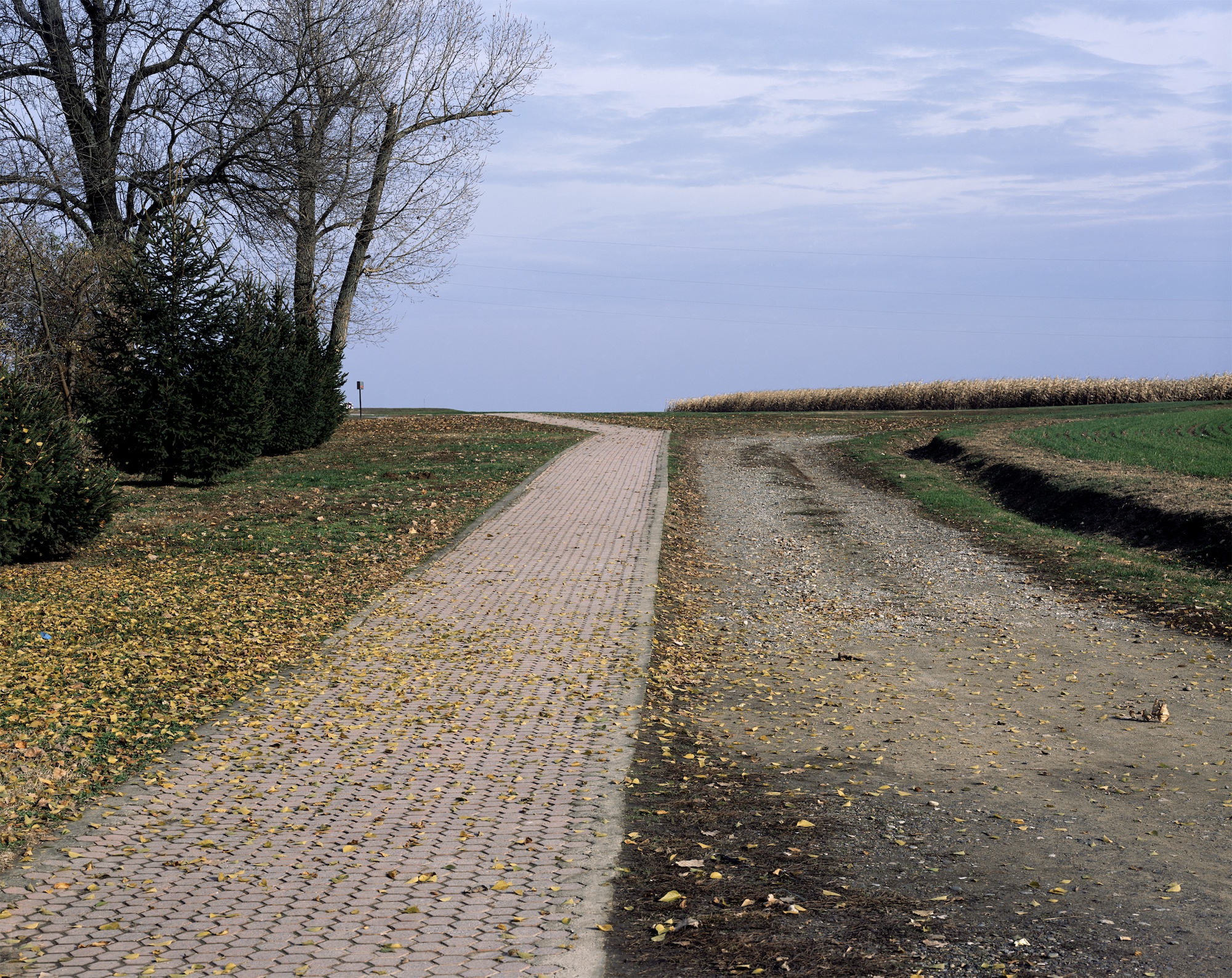


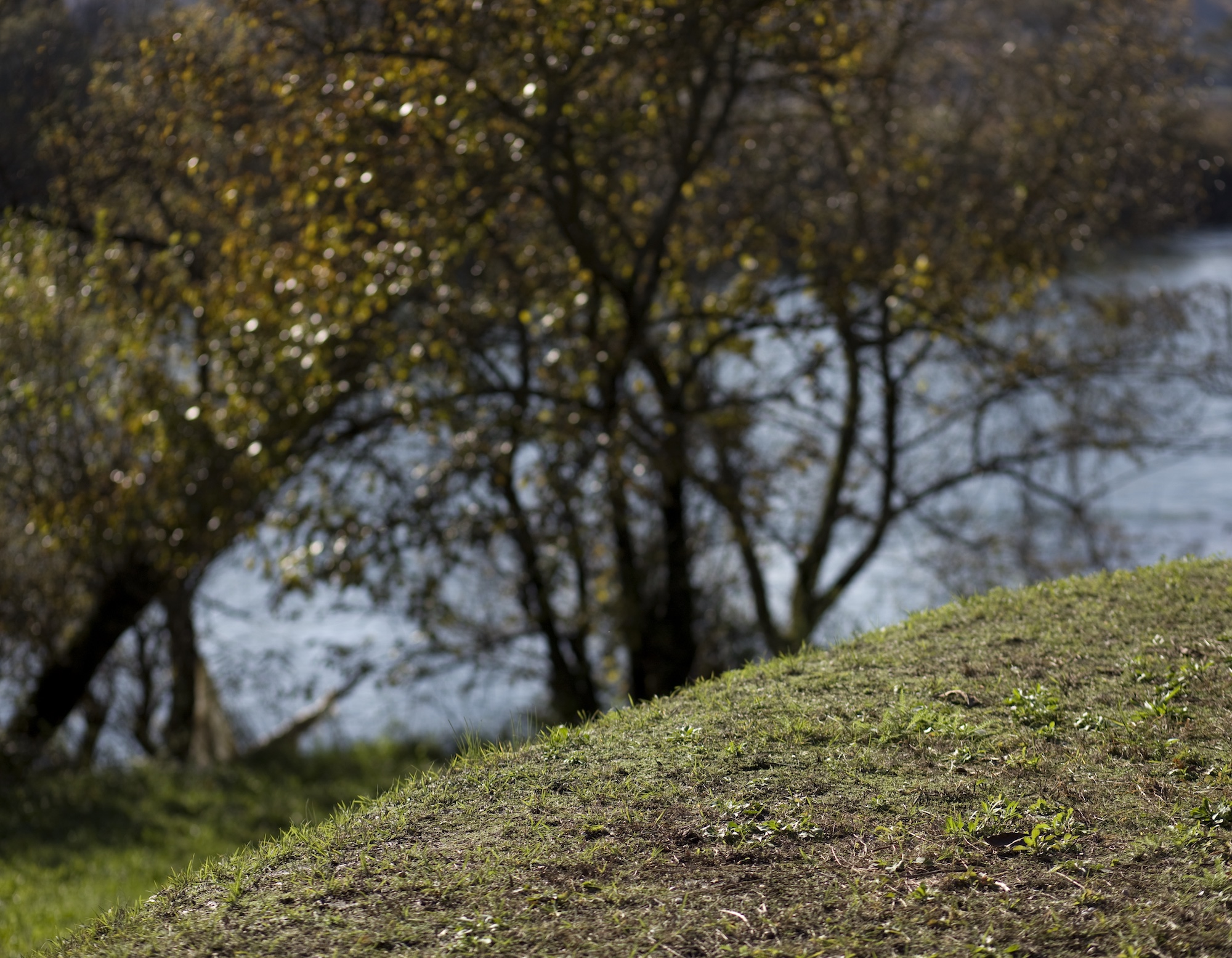
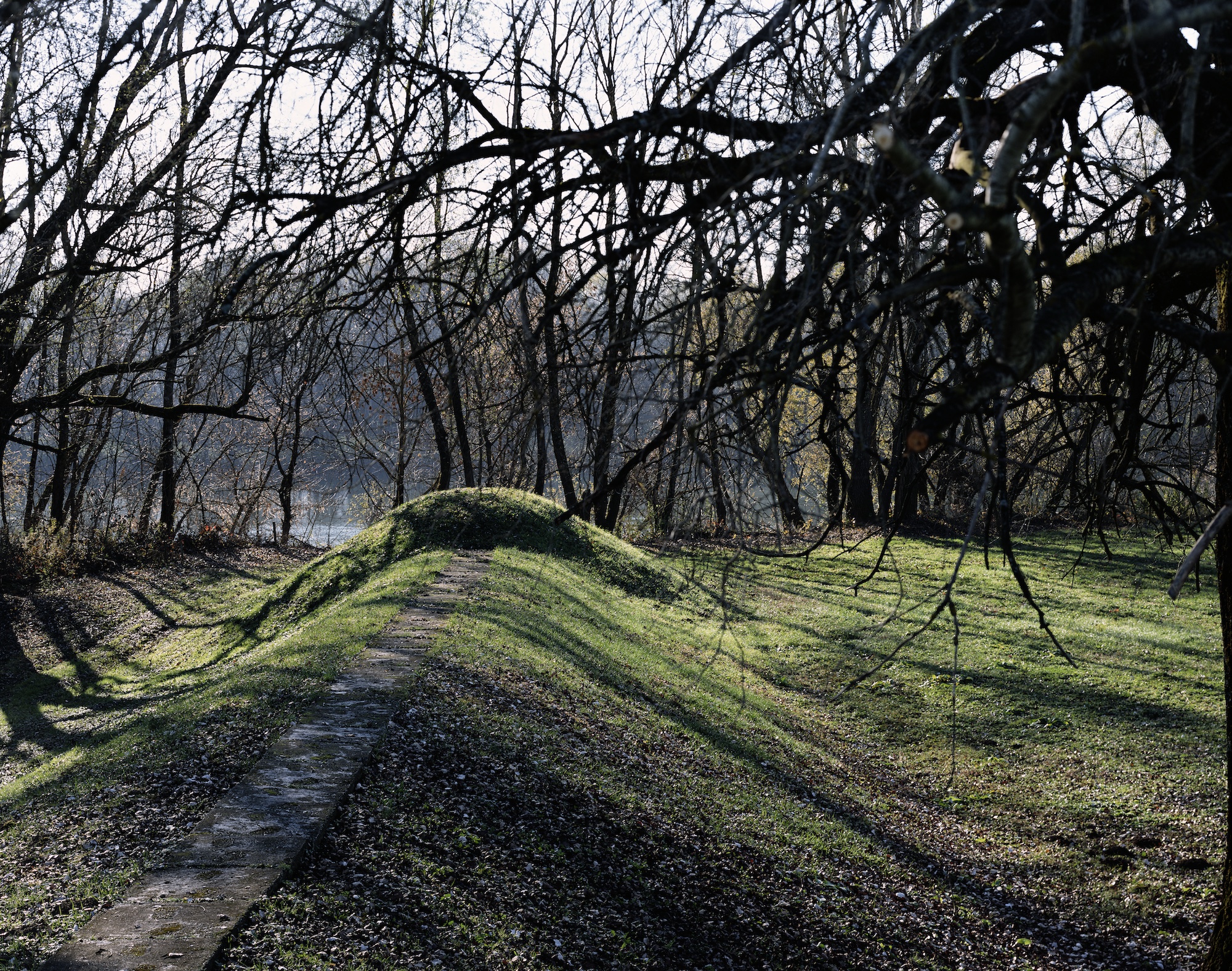

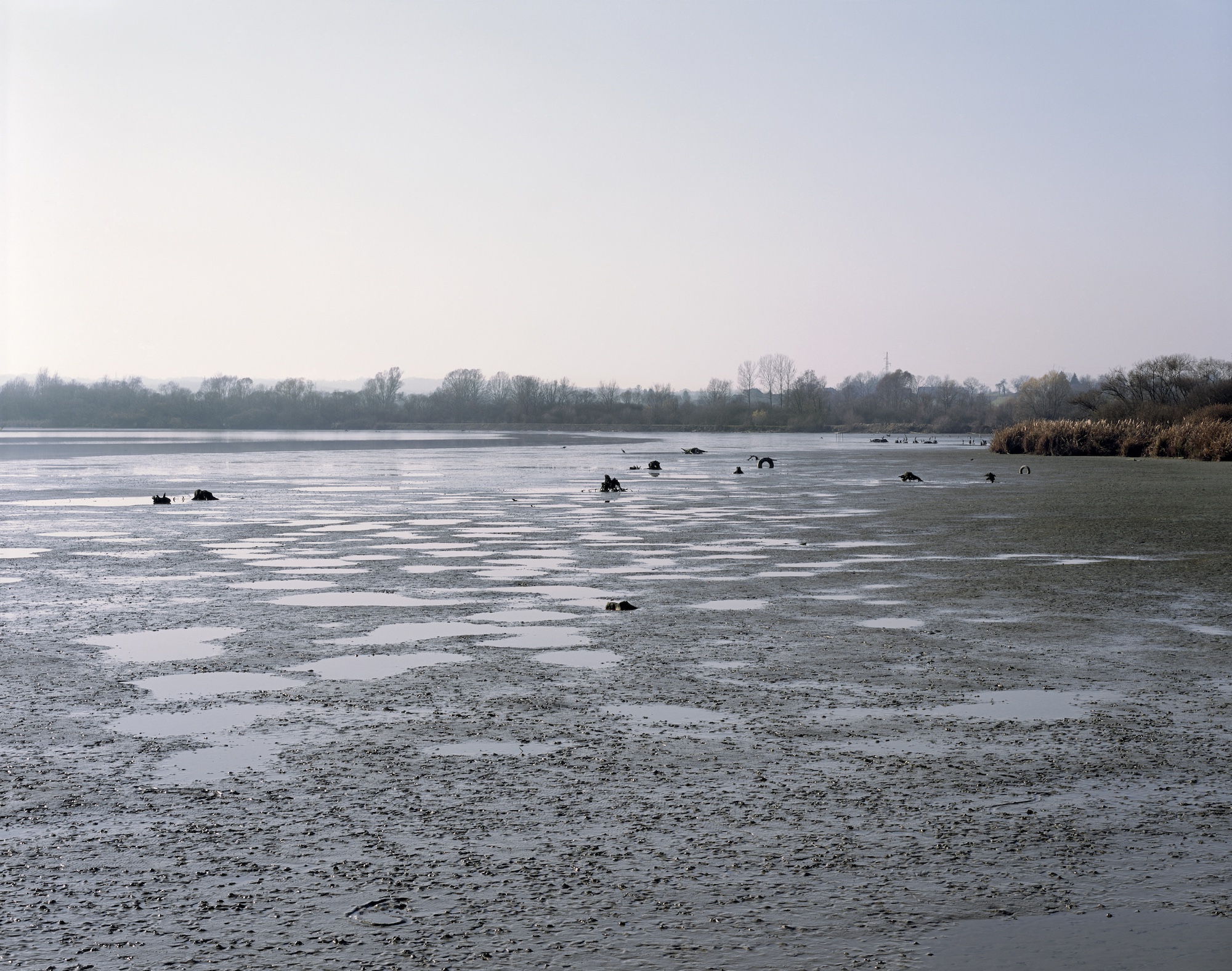

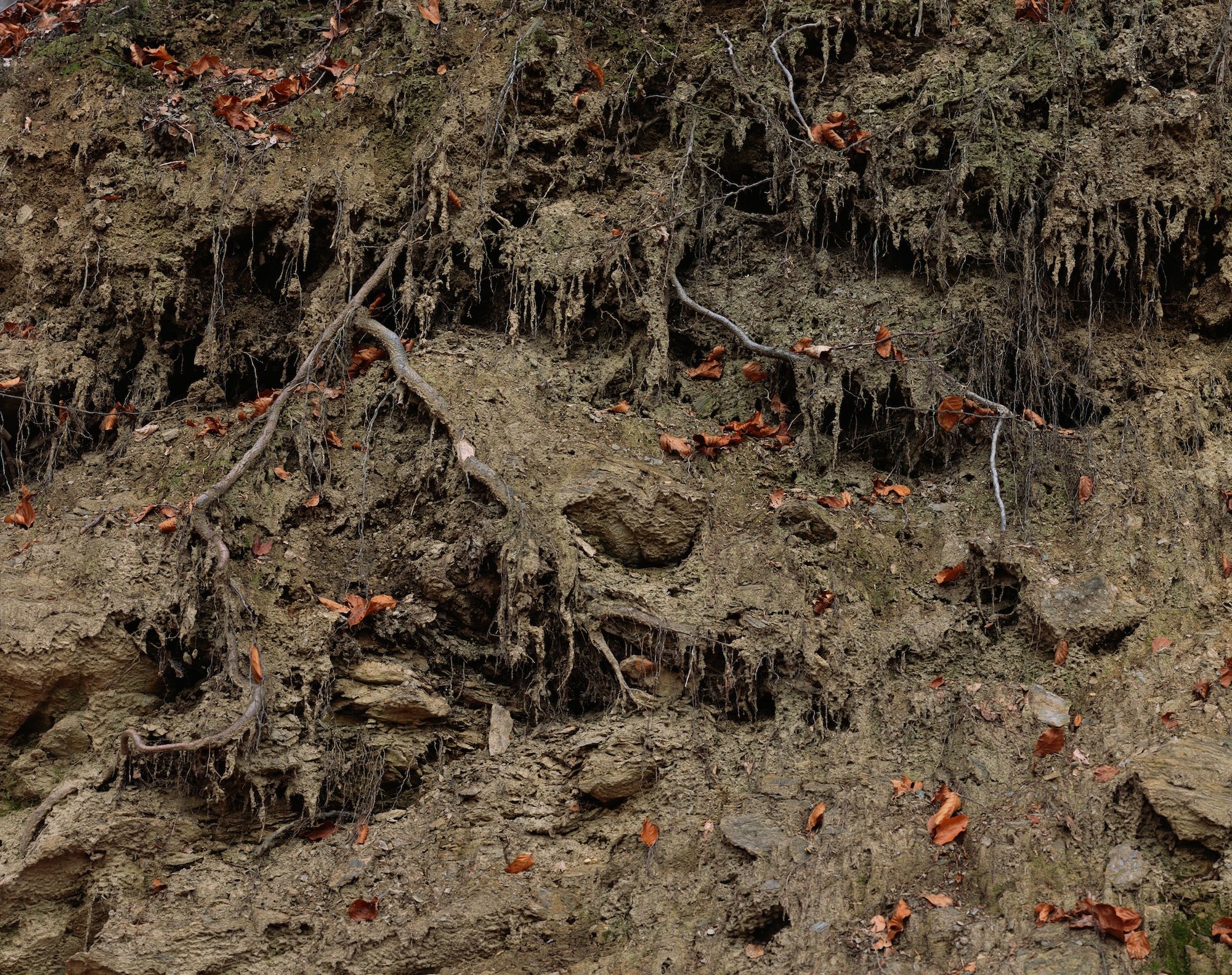
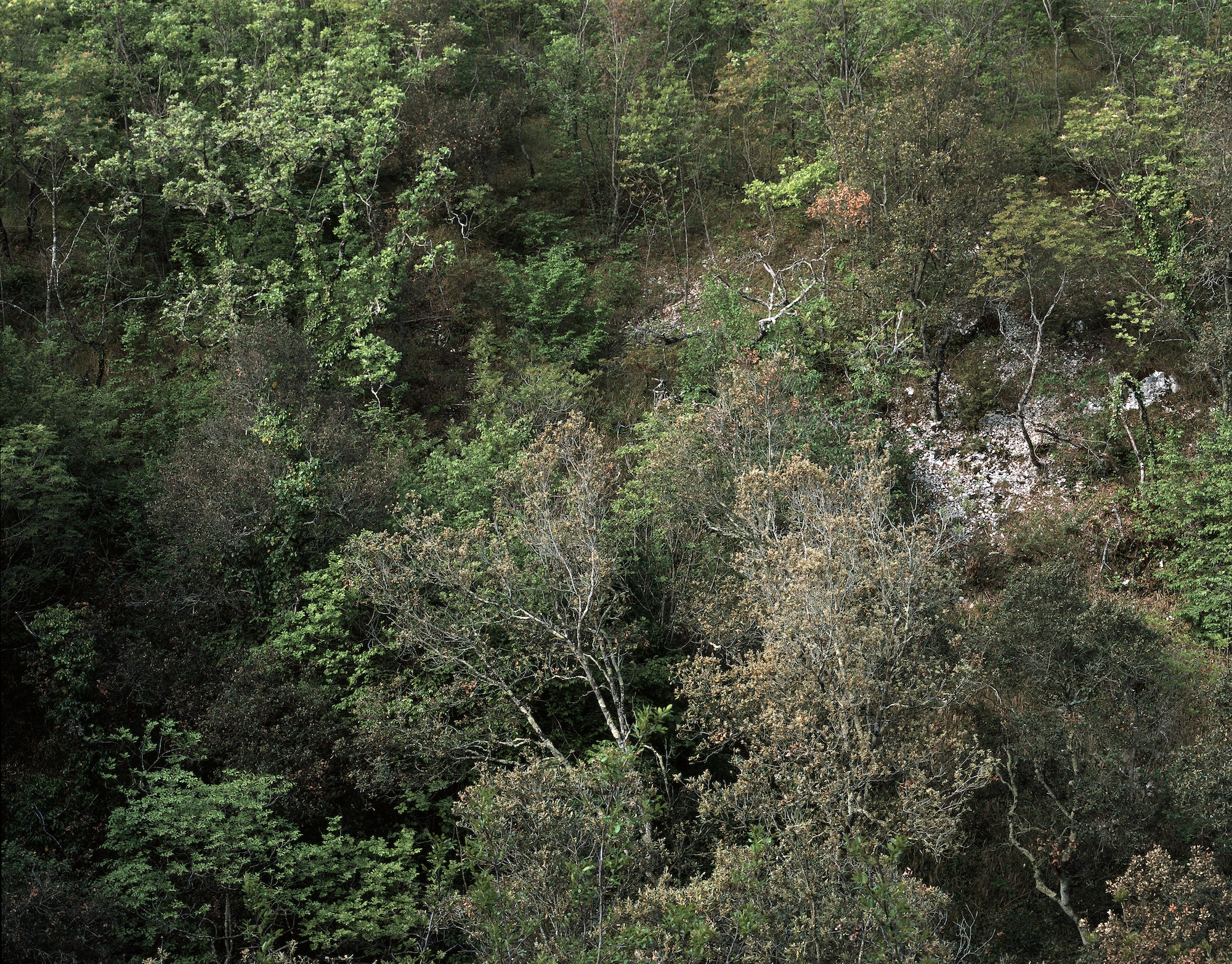


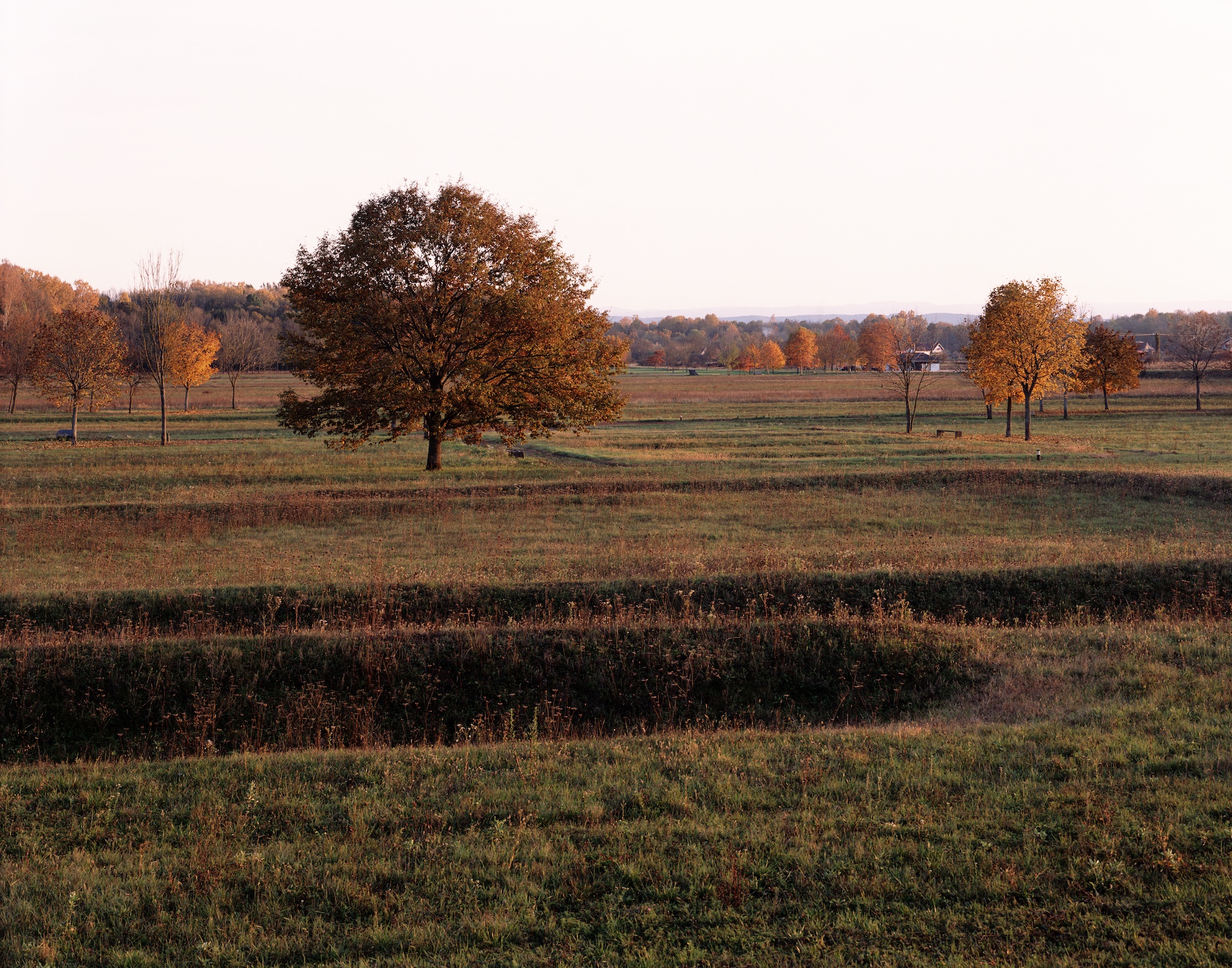
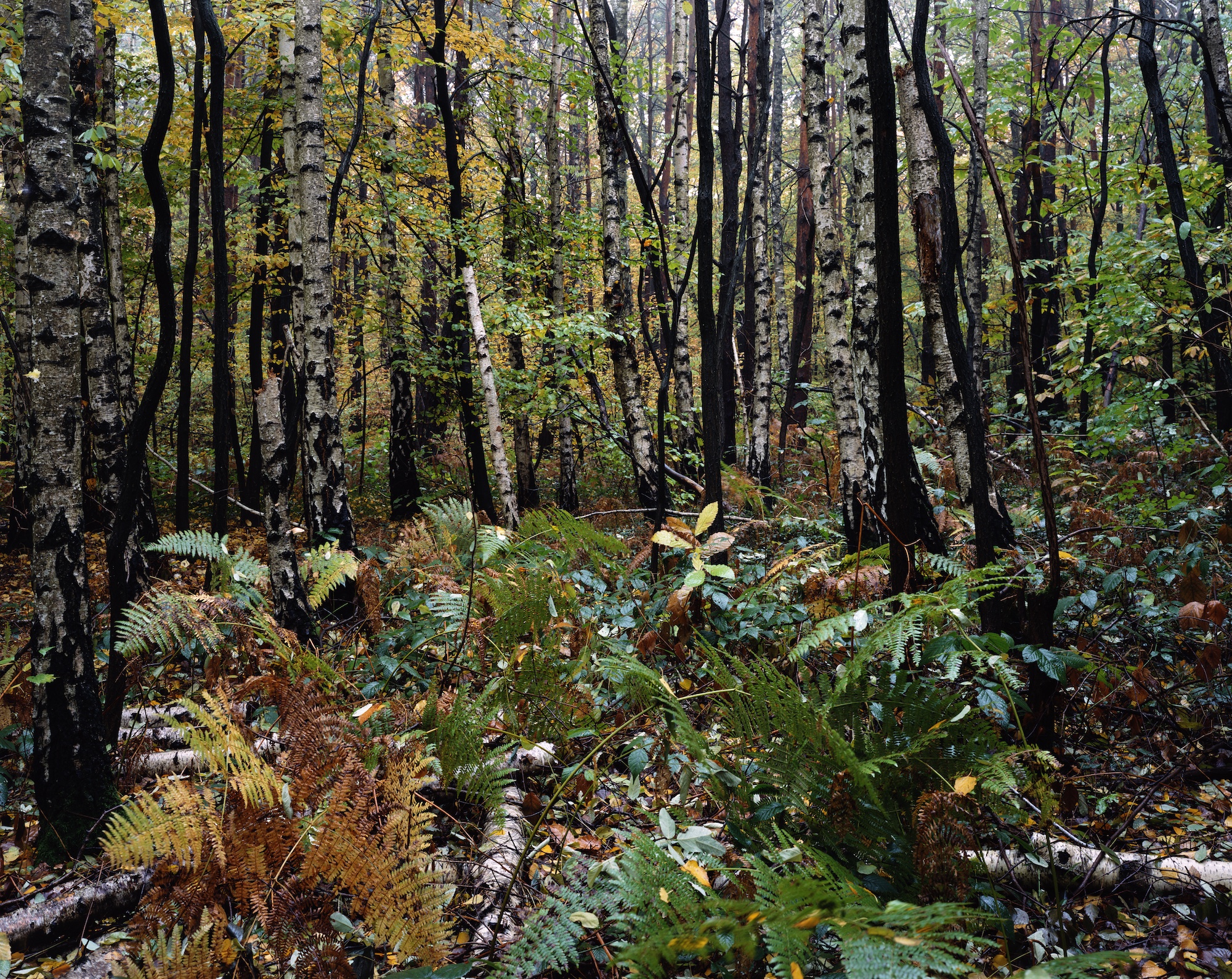


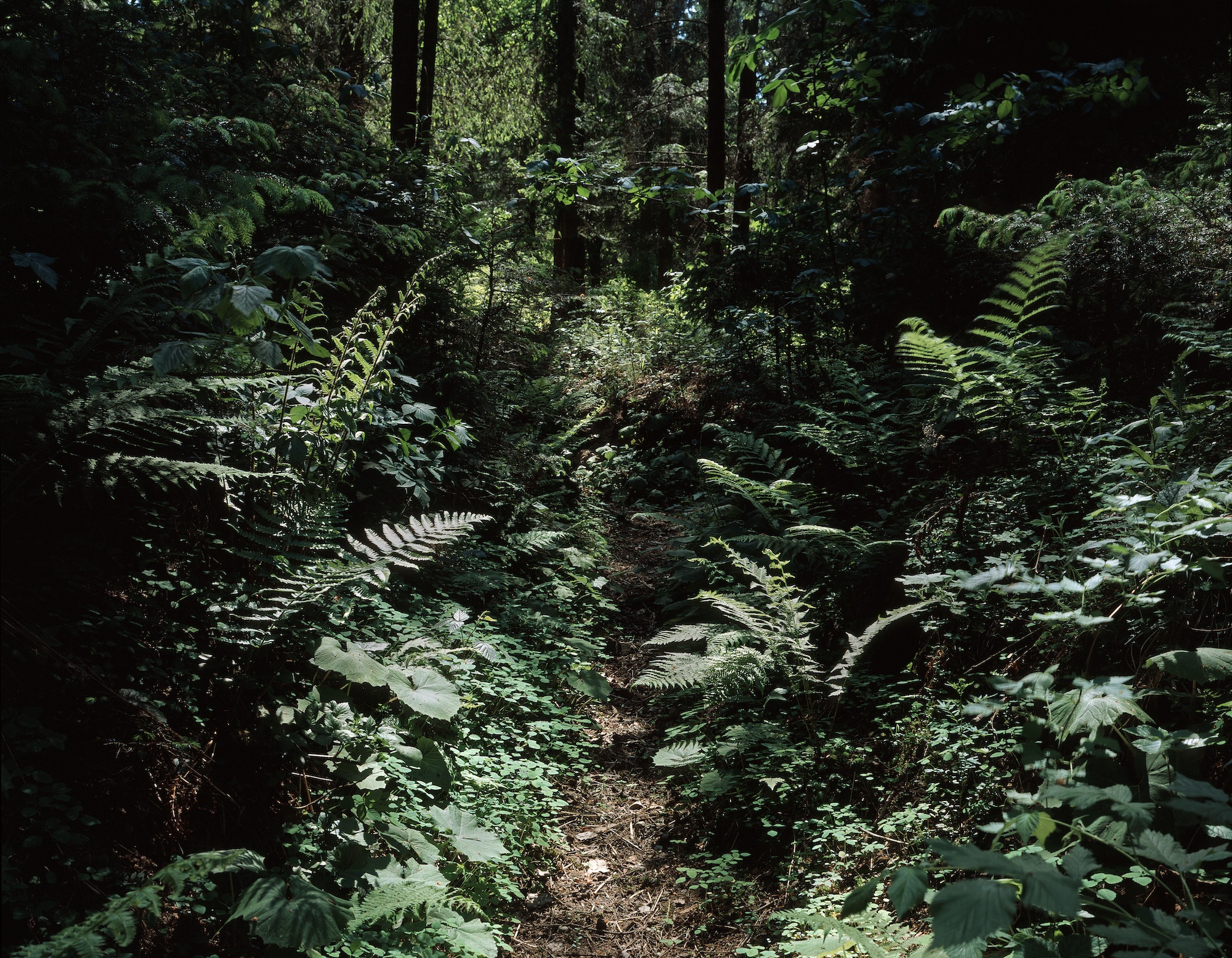


INFERTILE GROUNDS / NEPLODNA TLA
locations / lokacije
SLANA – ISLAND OF PAG
In the Slana and Metajna concentration camps on the island of Pag, as well as in Jadovno on mountain Velebit, the first mass liquidations of detainees (Jews and Serbs) were conducted in the Independent State of Croatia. The camps were operational from mid - June to August 25th 1941, when the Italians occupied that area. In the camps on Pag from 15.000 to 18.000 people were killed. The prisoners, often exhausted by hunger and thirst, were thrown into a pit or taken out to sea by boat, killed and thrown overboard.
There are no commemorative plaques or markings in the places where these camps were located.
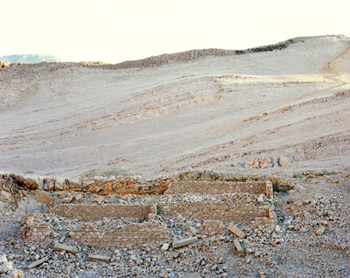
JASENOVAC
The Jasenovac concentration camp was a death camp in which men, women and children were killed because of their religion, ethnicity, ideological affiliation or sexual orientation between August 1941 and April 22nd 1945. The camp was built by the authorities of the Independent State of Croatia, installed in Croatian territory by the Nazi-fascist occupation forces.
In April 1945 the concentration camp was mined, burned and destroyed. Today, landscape of The Jasenovac Memorial Site is marked by mounds and hollows in the ground. The hollows mark the places where the camp buildings used to be, and the mounds mark the sites of graves or execution sites within the camp. Over the years, various interested parties have manipulated the number of Jasenovac victims, therefore the number of people killed has ranged from 30,000 to 700,000. Through the use of hundreds of different sources and a critical review of data for each individual victim, a figure of 83,145 was reached. These numbers are not final.


DOTRŠČINA
The woods of Dotrščina, in the north-eastern part of Zagreb are one of the sites where executions took place during the Indipendent State of Croatia (NDH). It is estimated that around 7.500 people were shoot at the site.
Among the victims were Croatian intellectuals and politicians Ognjen Prica, Božidar Adžija, Zvonimir Richtman, journalist and publicist Otokar Keršovani, who were shot on July 9th , 1941 as retaliation for Partisan activities. Croatian poet August Cesarec was also executed there on July 15th 1941.
At Dotrščina several monuments were raised, but some of them were damaged during the 1990's.
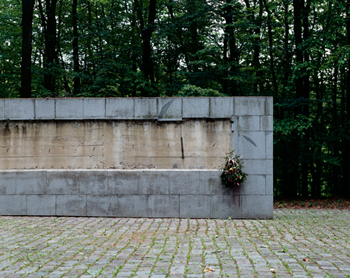

KLJUČ BRDOVEČKI
While working in the fields in the spring of 2009, the villagers of Ključ Brdovečki discovered a mass grave. Apparently members of the Croatian regular military units called domobrani (Home Guards) and soldiers of German Wehrmacht Blue Division were buried there along with a number of civilians. They were executed by members of the Yugoslav liberation units (partizani) in May 1945. After the corpses were buried villagers poured calx on them to prevent the stench of decomposing flesh to spread throughout the village. These events were not talked about during Socialism and still are disputed by many. Despite the announcements made in the media, excavation and exhumation have not yet started and the exact number of victims is not known. According to some unreliable sources, the number of the victims could reach a few thousand.
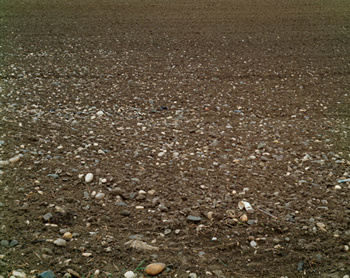
BUČJE
At the very beginning of the Croatian War for Independence, the Serbian rebels, assisted by the forces of the Yugoslav Army, organized a concentration camp in Bučje, near Pakrac. The prisoners were held in the building of the veterinary clinic. A dozen women were detained in a separate area. The camp was operational from August to December 1991. More than 300 Croatian soldiers and civilians were detained in the camp at various times. They were tortured, starved, beaten and humiliated. Twelve people were killed and the fate of 41 people is still unknown. After disbanding the camp, the detainees were taken to Stara Gradiška prison and they were exchanged in January 1992 under the supervision of the International Red Cross. No one has yet been convicted for the crimes at the Bučje camp.

SLJEME – ADOLFOVAC
On December 7th 1991, around 11PM, five reservists of the Croatian police (so-called Merčep's escadrons of death) entered the apartment of a Serbian family named Zec in Zagreb neigborhood Trešnjevka. Mihajlo Zec, who tried to escape, was killed on the spot. His wife Marija and 12-year-old daughter Aleksandra, who witnessed the murder, were taken by van to the mountain lodge Adolfovac on Sljeme near Zagreb, shot and buried there. Although the killers Igor Mikola, Nebojša Hodak, Siniša Rimac, Munib Suljić i Snježana Živanović were arrested and pleaded guilty before a magistrate, they were released because of procedural errors during the investigation. In 2004 the Croatian government decided to pay financial assistance to the surviving members of the Zec family in the amount of 1.5 million kuna. Subsequently, their lawyer withdrew a lawsuit against the Croatian state in the Zagreb Municipal Court. Adolfovac burned down in 1993. Once a popular hikers' lodge, today is a just a forgotten ruin.
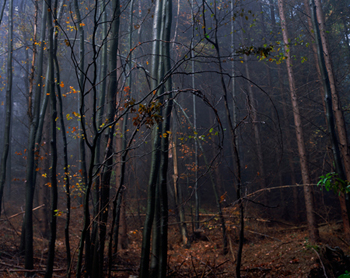

SISAK
During 1991 and 1992, a number of Sisak’s citizens of Serbian origin, although not involved in the rebellion, fell under suspicion and were taken away by groups of Croatian defenders. They were assaulted and tortured at various locations where Croatian anti-terror units were placed. Detainees were executed and their bodies were thrown into the Sava River. In some cases, whole families disappeared. The number of citizens who were tortured and/or liquidated ranges, according to various sources, from one hundred up to six hundred. Until recently no one was prosecuted for those crimes.
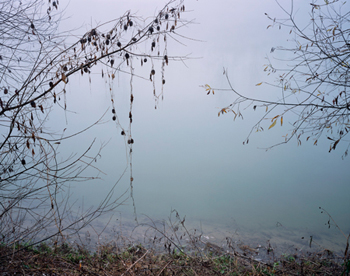
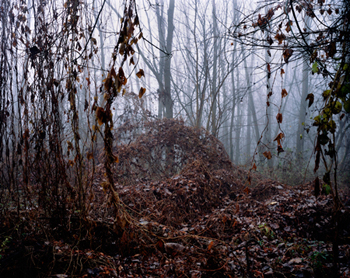
OVČARA
The Ovčara farm near the town of Vukovar is the scene of the worst crime committed against Croatia and one of the worst war crimes committed in Europe after World War II. At Ovčara, during the night of 20/21, November 1991, two days after the fall of town of Vukovar, paramilitary troops of Serbian rebels assisted by Yugoslav Army forces, executed 200 wounded Croatians - soldiers, civilians and medical personnel, aged 16 to 72 - who were taken from the Vukovar hospital. The bodies of those killed were thrown in a pre-dug hole and buried with bulldozers. Prior to execution they were exposed to constant beatings and torture. The International Criminal Tribunal for the former Yugoslavia indicted three former Yugoslav Army officers for the massacre at Ovčara: Mile Mrkšić (sentenced to 20 years imprisonment), Veselin Šljivančanin (sentenced to 17 years imprisonment) and Miroslav Radić (acquitted).

PAKRAČKA POLJANA - RIBNJAK (Fish pond)
In October 1991, members of reserve units of the Croatian Ministry of the Interior Affairs, commanded by Tomislav Merčep tortured and liquidated several Serbs in villages around Pakrac, Garešnica and Kutina. Some of the victims were brought from Zagreb, where a pavilion at the Zagreb Fair was converted into a temporary camp (Hall 22). In Pakračka Poljana prisoners were kept in the basement of elementary school and a locker room of a local football club. They were tortured there in the most brutal ways.
In November 1991, some members of the Croatian Military police broke into the homes of Serb civilians in the villages of Ribnjak and Marino Selo near Pakrac, under the pretext of searching for illegal weapons. Many of them were taken in for interrogation, but were tortured and then executed and thrown in the fish pond. On several occasions the guards of the fish pond found dead bodies in the water. Eighteen Serbian civilians were killed. In March 2009 six former members of the Military Police were sentenced to a total of 46 years in prison for crimes committed in Ribnjak. Supreme Court of Republic of Croatia has on March 23rd 2010, on basis of procedural mistakes, abolished the verdict of the Council of War Crimes of the County Court in Požega. The case has been redirected to a new trial at the County Court in Osijek. On December 10th 2010 the police have detained Tomislav Merčep on the basis of the demand of the Public defense attorney of Zagreb. He is being charged with commanding and immediate liability for war crimes against civilians in Pakračka Poljana.

MEDAČKI DŽEP
On September 9th 1993 the Croatian army launched a military operation called Medak Pocket, which had the aim of reducing the pressure of the Serbian rebels on the city of Gospić. Medak Pocket is an area that includes villages of Divoselo, Ćitluk and Počitelj. Although the Croatian forces had achieved a tactical victory and temporarily pushed Serbian forces from the area, the operation was marked by controversy because of skirmishes between the Croatian army and UN peace keepers, and the killing of 36 Serbian civilians, most of them older than 60, after the end of the military operation. Serbian properties were systematically looted and destroyed to prevent Serbian population from returning. In 2000 another 11 corpses were found in one septic tank in the part of the town which used to be inhabited by Serbs. Although part of the Serbian population eventually returned to the area, Medak Pocket is still largely abandoned.

STUBICA
The city of Stubica was the center of the Croatian-Slovenian peasant revolt in early 1573. The Great Peasants' Revolt or Peasant War, as contemporaries called it, began in the Susedgrad-Stubica estate. Causes of rebellion were exacerbated by the position of farmers and limitations and interferences in peasant trade. Another cause was fighting among nobility, which armed the peasants, and the brutal treatment of serfs by Franjo and Gabriel Tahy.
Rebellion, which began in late January, came to its bloody finale in the battle on the field near Stubica, on February 9th 1573 in which the main rebel group was defeated. The most prominent leader of the rebels, Ambroz (Matija) Gubec, was captured and executed a few days later in Zagreb.
In Yugoslavia the Peasant revolt was a symbol of struggle against feudalism and of brotherhood and unity of two nations. Today Gubec and the Peasant revolt no longer represent the class struggle. The cooperation between Croatian and Slovenian peasants is ignored because of strained relations between the two countries.

BLEIBURG
When it became clear that the Quisling Independent State of Croatia will collapse with the fall of Nazism in Europe, a number of the Ustasha and Home Guard units (domobrani) and a number of civilians retreated in fear of revenge from the partisans towards the Austrian border in the hope of surrendering to the British forces. Around 30.000 people gathered near the Carinthian town of Bleiburg. According to the agreement that existed among the Allies that captured forces will be handed over to the armies they fought against, the British handed over the prisoners to the Yugoslav partisans on May 15th 1945.
A very small number of prisoners were killed on the plains near Bleiburg. Most were killed after crossing the Drava river, or on forced marches under inhumane conditions over long distances. Events that followed the Bleiburg are known as the Croatian Way of the Cross. The exact number of victims at Bleiburg and marches that followed has never been determined with certainty, and realistic estimates range from 20.000 to 50.000.
In Yugoslavia, the events that took place in Austria and in the Way of the Cross were covered up and it was forbidden to visit Bleiburg. After Croatia gained its independence, perceptions were changed and Bleiburg became a place of pilgrimage. Commemorations are often mired by the use of Ustasha symbols by some of the visitors.
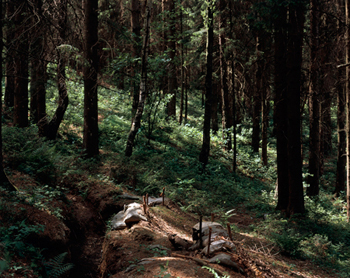

FOIBAS
Foibas are a natural karstic holes in Istria and the Slovenian coast in which members of the Yugoslav (Slovenian, and Croatian) Partisan formations in September 1943 (after the capitulation of Italy) threw Fascists, and their supporters, mostly Italians, as well as many innocent victims. Another outburst of violence occurred in May 1945 after the end of the World War II. An exact number of victims, the circumstances of the crimes, and the motives of the perpetrators have not yet been thoroughly investigated. A lot has been written on the subject in Italy, and the right wing parties have always exaggerated the number of victims of foibas and exodus of the Italian population from Istria, ignoring at the same time the victims of terror and massacres done by the Italian Fascists in Istria and Dalmatia. In Croatia the victims of foibas remained overshadowed by the victims of the Croatian Way of the Cross, and the topic hasn’t been thoroughly discussed. The topics of foibas and exodus of the Italian population after WWII has remained a constant subject of disputes for the Italians, Croatians, and Slovenians.
According to the writings of the Italian daily newspaper of the time, Corriere Istriano, between September 20th and 22nd 1943, 84 Italians had been cast into the foiba near Vinež. Germans, who had occupied the territory after the capitulation of Italy, hired the mineworkers from Labin to remove the bodies from the depth of 135 meters. On May 9th 1945 an unknown number of Italian and German soldiers, who have previously surrendered themselves on May 7th to Partisans in Muzil (Pula), were thrown in a deep foiba Golubinčina near Rakalj. According to some sources, from total number of approximately 2200 soldiers, mostly Germans (members of the 237th infantry division), tens of soldiers were executed immediately, around 800 were led to the Labin mine, and around 60 of them were killed in Golubinčina. Not long after the massacre, according to some of the locals, an intolerable odor had started to spread through Rakalj, and was felt for months. This unexplored foiba is only one amongst many scaffolds that can be found between Pula and Barban - the path that some 1200 soldiers started at today’s Pula airport. There are testimonies about Partisans who came a year later after the crime, and removed the bodies.

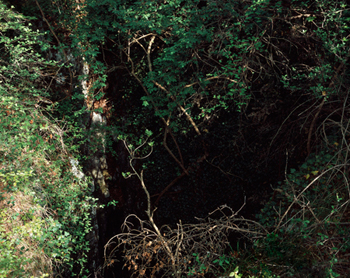
BAĆIN
On October 21st 1991 in the village of Baćin 56 elderly Croatians from Cerovljani and Hrvatska Dubica were killed. Members of the Serbian paramilitary troops escorted the civilians from a bus in Baćin and gunned them down with automatic weapons. They left the bodies unburied on banks of Una river. They later returned, dug holes with a dredge and buried the bodies. Perpetrators were never convicted for this war crime.

LOVAS
On October 10th 1991 Yugoslav Army and the Serbian paramilitary troops occupied the villages Lovas and Opatovac located near the Serbian border, 20 km southeast of Vukovar. The Croatians were forced to wear a white band on their sleeve for recognition; the non Serbian population was tortured and killed, the properties looted and devastated. On October 18th 1991 members of the Yugoslav Army, local authorities and Serbian voluntary divisions “Dušan Silni” took 50 Croatian civilians, held captive as work labor in Lovas, into the mine field near the village. The prisoners were forced into the mine field to clean it of mines. Several mines exploded, and the Serbian army forces opened fire. 21 civilians died, 14 were wounded. The local cemetery of Lovas was the site of a mass grave from which 68 victims were exhumed, 10 more were exhumed form individual graves. 14 people were charged for the crimes in Lovas. On July 26th 2012 the Supreme Court in Belgrade has convicted the self-proclaimed commander of the occupied Lovas Ljuban Devetak, to 20 years in jail. Others were sentenced to 4-14 years in jail.

DONJA GRADINA
Nearly half of the total number of victims of the concentration camp in Jasenovac was killed in the most gruesome ways in Donja Gradina, on the right bank of the Sava River. The first mass liquidation of prisoners in Donja Gradina, took place in January 1942. Since the winter was harsh, it was impossible to dig graves, so the Ustasha transported the villagers of Jablanac by ferry to Donja Gradina, killed them and then burned their bodies in the houses of the evicted villagers of Donja Gradina. This area was then used as a killing field until 1945.
In nine burial fields 105 mass graves are located, covering an area of 10,130 square meters. Later another 22 mass graves were found.
At the point where the river Una enters the river Sava, there used to be a poplar tree called "Poplar of sighs" or "Friar Satan's Poplar" because of numerous hangings and slaughter carried out in the most atrocious ways under or on the tree. The tree fell down in 1978. It was then preserved and protected in a horizontal position as a natural monument to the atrocities committed there.


STUPIŠĆE (ISLAND VIS)
During decades of SFR Yugoslavia the island of Vis was closed to foreigners and transferred into great military fortress due to its strategic position. Military staff was often more numerous then local residents who were forced to live in isolation. More than 60 military facilities are placed on the surface of 90 km2 including underground garrisons such as missile base or cavern to shelter military fleet. The length of each tunnel is unknown. After the retreat of JNA (Yugoslav National Army), on May 30th 1992 all the documentation was taken away, cannons were blown up while there were several unmarked mine fields left on the island. JNA's artillery and missile base was located on cape Stupišće. Artillery positions, dug into the hill, were connected by a labyrinth of underground corridors. Cavern entrances were camouflaged by Styrofoam »rocks«, ventilation is placed inside the rocky objects that appear as traditional island houses. Consequences of 50-years' isolation of island of Vis is reflected in economical underdevelopment and inability to develop tourist industry. Massive emigration of local population from the island was associated with that very fact. Tunnels and other facilities are now abandoned, robbed and devastated. Thieves of iron dismantled and took away everything, even the huge 4-tones cannons. Only one of 37 enormous underground objects successfully changed its initial purpose and became a winery. Majority of facilities nowadays belong to Croatian Ministry of Defence, and some are returned to local authorities. Occasionally local tourist agencies guide visitors around the island's military heritage preserved and maintained in its current state by the isolated struggle of few locals who cherish the island's rich military history.

SVETA GERA / TRDINOV VRH
Sveta Gera is the highest peak of Žumberak (Gorjanci in Slovenian). Since 1923 it is named Trdinov vrh in Slovenia, after the literate Janez Trdina. Area of Sveta Gera is subject of border dispute between Slovenia and Croatia. In 1991 when JNA retreated from the barracks it was immediately occupied by Slovenian Army and since then this piece of land is under its control. Therefore, that is the reason and the trigger for the border dispute caused by disintegration of SFR Yugoslavia. There are numerous sections of controversy and dispute along the border, especially in Istria, Piran Bay and Žumberak. With the introduction and enforcement of ecological-fishing zone Croatia closed Slovenia's access to the international seas, while Slovenia as a member of EU took advantage and blocked opening of new chapters in Croatia's accession negotiations. Croatian government proposed the solution by calling for international arbitrage but that was rejected by Slovenia insisting on further negotiations. These events were followed by series of border incidents and arduous negotiations without solution. Slight progress was achieved only after several conversations between Jadranka Kosor and Borut Pahor. The arbitration agreement was finally signed on 4 November 2009 in Stockholm. Thus Slovenian government released all opened Croatian chapters in EU accession negotiations. By the end of 2014 five members of arbitrage council ought to decide on the border dispute. Until then Croatia ought to become a member of EU.

Holm Sundhaussen has analysed in detail the construction of memory and myths in Yugoslavia and its successor states, positing that memories are dependent on social setting and context, and are consequently subject to change.[1] When Yugoslavia broke up, the Yugoslav memory was broken down into a number of national memories that were given the task of setting up the new identities of each individual nation. Debates that involved an attitude to the past, different interpretations and manipulations according to given political goals were omnipresent in the media. Names like Jasenovac and Bleiburg went beyond their topographical referentiality, and each time they were mentioned included different possible interpretations and contextualisations. This prompted consideration of the culture of memory and of the places that in various ways construct the national history and identity. Thus in 2008 I started the research and in 2009 began taking series of photographs that I named Infertile Grounds, metaphorically signifying the impossibility of development in an area in which historical accounts had never been settled. I was interested by places that political rhetoric had used copiously in inflammatory speeches during the 90s, places of institutionalised memory as well as those that had never been marked by a single memorial plaque. As after World War II, so after the war in the former Yugoslavia, the politics of memory labelled what needed remembering, and suppressed what it was desirable to forget. Each party in the conflict has the need to commemorate only its own victims and deny the right of the other party its memories.
Pierre Nora claims that the concept lieux de memoire was created because in our society rituals have vanished. Nora believes that museums, archives, cemeteries and collections, public holidays, anniversaries, memorials and shrines are the rituals of a society without a ritual, artificially established, determined and decreed by a society deeply absorbed in its own transformation and renewal.[2] There is no spontaneous memory, hence the endeavour to create it from archives, marking anniversaries and organising celebrations, carrying out operations that according to Nora are no longer natural. It is hard to understand what it is that prevents Croatian citizens who so heartily wanted to have independence hanging out the Croatian flag on their homes on the days of state holidays. Year after year television polls show that citizens of this country do not know which national holidays are celebrated on which day. “Every group that wants to consolidate itself as such endeavours to create and secure spaces that are not just the theatres of its forms of interaction but also symbols of its identity and moorings for its memory,” writes Assman.[3] And so the Altar of the Homeland was, significantly, set up at Zagreb’s burg of Medvedgrad during the rule of Franjo Tudjman, the first president of
Croatia, in 1994, and after his death was neglected and little visited.
As historian, Tudjman was obsessed with historical revisionism and the establishment of rituals of memory to build up an authentic Croatian identity. But the only places that are visited and that do have an importance in the cultural memory are places of real events from recent history, sites of mass crimes and suffering. Naturally, only those places that in the official culture of memory are accepted, marked by memorial plaques and monuments. “The most original medium of any mnemonic device is location in space,” as Assman points out. But while mnemonics operate with imagined spaces, the culture of memory sets up signs in natural space.[4] When in Varivode a memorial slab was erected to the Serbian victims killed after the military operation Storm, it was smashed the very next day. The same thing happened in the Bay of Slana on Pag island, the site of a concentration camp where 15,000 to 18,000 people, mostly Serbs and Jews were killed from mid-June to August 25, 1941. In the collective memory, this place hardly exists. Individual memories are cherished by the descendants of those who were killed, by those who have the need to commemorate their own dead.
Places of memory are not unambiguous; rather, their meanings are in a state of flux, and a change in the political system can completely change the meaning of a place. The village of Srb, in Lika, was marked in Yugoslavia by a monument commemorating the day of the uprising of the people of the Socialist Republic of Croatia against Nazism and fascism; however, when Croatia became independent, the commemoration of AntiFascist Struggle Day changed its location and date, and the monument in Srb was blown up and destroyed.[5]
The photographs of the Infertile Grounds series show empty landscapes, on the whole avoiding putting any memorial emblems in the frame. Memorial signs are indications of a politically motivated culture of memory and are subject to destruction, change of meaning and ideological iconography. Assman points out that “even landscapes can serve as a medium of cultural memory”[6] and then are entirely elevated to the level of sign. He calls them mnemotopes[7]. Landscape is a social construct, which Liz Wells defines as the look that comprehends both nature and the impact that humanity has had upon it.[8] Mitchell states that landscape “is a medium of exchange between the human and the natural, the self and the other. It is both a represented and a presented space, both a signifier and a signified, both a frame and what a frame contains.”[9] Accordingly, in the series Infertile Grounds I take the landscape as the point of departure, and look upon it as site for the construction of collective memory. Some of these sites have been raised by ideology to the level of the sign, and the actual topographical reference as title of a photograph evokes in the viewer a whole series of common/produced knowledge and media interpretations. “Naming transforms space into place”, writes Wells.[10] For the photographer too, in the very act of photographing, the landscape is that “present space” that he or she experiences and interprets while including the ballast of all that knowledge and all those emotions created in the meditative process of recording with a large format camera. History is not visually inscribed in the landscape itself, but the fact is that these selfsame trees were growing in the winter when the Ustashas turned Donja Gradina into an immense region of mass graves and when the same location was photographed almost 70 years later. Poplar of Sighs orPoplar of Brother Satan, as the inmates of Jasenovac Camp called the tree on which the Ustashas hanged their victims after first savagely torturing them, has absorbed and also contains memories of these events, or we can at least believe that among its grains there is this inscription, if illegible to us.
Unlike places that by institutionalisation have permanently secured a place in the collective memory, like Jasenovac and Donja Gradina[11], some sites have only recently been discovered, have still been insufficiently investigated, and their geographical names will arouse the interest of just the handful of initiates. Such are the places Kljuc Brdovecki and Gornji Hrascan, locations at which the Partisans allegedly, immediately after World War II, carried out the mass executions and burial of hundreds of Ustashas, regular soldiers and members of the Wehrmacht. This memory was repressed and even proscribed in Yugoslavia, but that was unable to prevent human bones occasionally being turned up in the fertile ploughland in the surroundings of Zapresic. A look at the landscape here is a look at nothing, or as Mitchell records: “The invitation to look at a view is thus a suggestion to look at nothing - or more precisely, to look at looking itself - to engage in a kind of conscious apperception of space as it unfolds itself in a particular place”.[12] Where the naming of the locality is not enough13 a text providing the factual details of the historical events inducts the viewer into the context of the space that he or she is looking at in the photograph. It is this history that the landscape shown transforms from a general and undefined space into a place.[13]
Some locations by their very names will evoke just nice memories of a family weekend trips to the Zagreb mountain, Sljeme, like the popular hiking lodge Adolfovac. But this was also the site of the execution of Aleksandra and Marija Zec, who on December 8, 1991, were taken there by the police reservists of the so-called squadron of death commanded by Tomislav Mercep, after they had murdered their father and husband Mihajlo Zec in their home in Tresnjevka. The case of the liquidation of the Zec family is very well known in the Croatian public, particularly since the killers, even after their admission of guilt, were released; but the place of their murder is not marked, is not a part of the official culture of memory. The hiking lodge Adolfovac was itself burnt down to the ground in 1993. The photographs are more than a mere reference to a real locality, for the viewers they can become a real place.[14]
For this reason, in the Infertile Grounds series I endeavour to create a place of memory within the space of the photograph, an alternative memento that is not created by ideology, rather by the need to open up the space of remembrance for victims who are never going to acquire their own space in the official culture of memory.
Sandra Vitaljić
[1] Sundhaussen, Holm, “Jugoslavija i njene države sljednice. Konstrukcija, destrukcija i nova konstrukcija "sjećanja" i mitova”, in Brkljačić, M., Prlenda, S. (ed.), Kultura pamćenja i historija, Golden marketing-Tehnička knjiga, Zagreb, 2006., p. 242
[2] Nora, Pierre, Between Memory and History: Le Lieux de Memoire, Representations No. 26, Spring 1989, University of California Press, p.12
[3] Assman, Jan, “Kultura sjećanja”, in Brkljačić, M., Prlenda, S. (ed.), Kultura pamćenja i historija, Golden marketing-Tehnička knjiga, Zagreb, 2006, p. 54, translated from Croatian
[4] Ibid., p. 70
[5] The Srb memorial was reconstructed in 2010, but the actual events in Srb in July 1941 are still subject to various controversial interpretations.
[6] Ibid.
[7] Halbwachs also wrote of the legendary topography of the Holy Land as expression of collective memory, explaining it by the need for each group to localise and monumentalise their own memory. In the previous chapter, Broomberg and Chanarin, already mentioned, dedicated the only visual chapter in their book Chicago to the Palestinian landscape, whose history contemporary Israel is systematically erasing, attempting to wipe out every memory of Arab life before the creation of the state of Israel in 1948. Desert areas are afforested with pines in a contemporary ritual in which the victims of terrorist attacks and fallen soldiers are commemorated. These woods have become popular excursion sites, and the beauty of the afforested landscape calls to mind the image of a paradisal garden, calling to mind the lost homeland of the Jews. And yet, this new forest landscape is actually located in the expropriated lands of Arab villages that have been destroyed, the inhabitants forcibly evacuated in 1948. Broomberg and Chanarin with their photographs draw attention to landscape as a space for the deletion of memory and of collective amnesia. See Broomberg, Adam, Chanarin, Oliver, Chicago, SteidlMACK, Gottingen, 2006.:
[8] Wells, Liz, Land Matters - Landscape Photography, Culture and Identity, I.B. Tauris, London, 2011, p. 2
[9] Mitchell, W.J.T., Landscape and Power, The University of Chicago Press, Chicago, 1994, 2002, p. 5
[10] Wells, Liz, Land Matters - Landscape Photography, Culture and Identity, I.B. Tauris, London, 2011., p. 3
[11] Jasenovac and Donja Gradina are a battlefield for different remembrance cultures. Once part of a single unit called Jasenovac Memorial Area, today these two locations are in two different states – Jasenovac in Croatia and Donja Gradina in Bosnia and Herzegovina, or rather, in Republika Srpska. At commemorations on the different banks of the Sava, different numbers of victims are mentioned. During the years, the different sides have manipulated the number of victims of Jasenovac, and the figure has ranged from 30,000 to 700,000. According to the most recent research of the Jasenovac Memorial Centre, the real number of victims ranged between 80,000 and 100,000. In April 2010, a name-by-name list of the victims of Jasenovac was published, in which, using more than a hundred different sources, and with a critical re-examination of the data for each individual victim, the number of 80,914 was reached, although this is still not a final number. See www.juspjasenovac.hr.
[12] Mitchell, W.J.T., Landscape and Power, The University of Chicago Press, Chicago, 1994, 2002., p. viii 13 The photographs are always accompanied by a text that explains events at the location shown. Some places are generally known and it is not necessary to explain them in detail, but it always depends on the cultural heritage of the viewer.
[13] The relationship between space and place is a key question in the context of landscape. See more in Mitchell, W.J.T., Landscape and Power, The University of Chicago Press, Chicago, 1994,2002., p. viii
[14] Author Kitty Zijlmans points out that it is this that is the reason that we take photographs with us in our wallet, looking at them, kissing or touching them. We also use them to mark and familiarise some temporary space, like a hotel room, to turn it into our own space. Zijlmans, Kitty, “Place, Site and Memory in Contemporary Works of Art”, in Westgeest, Helen (ed.), Take Place: Photography and Place from Multiple Perspectives, Valiz, Amsterdam, 2009., p. 221


